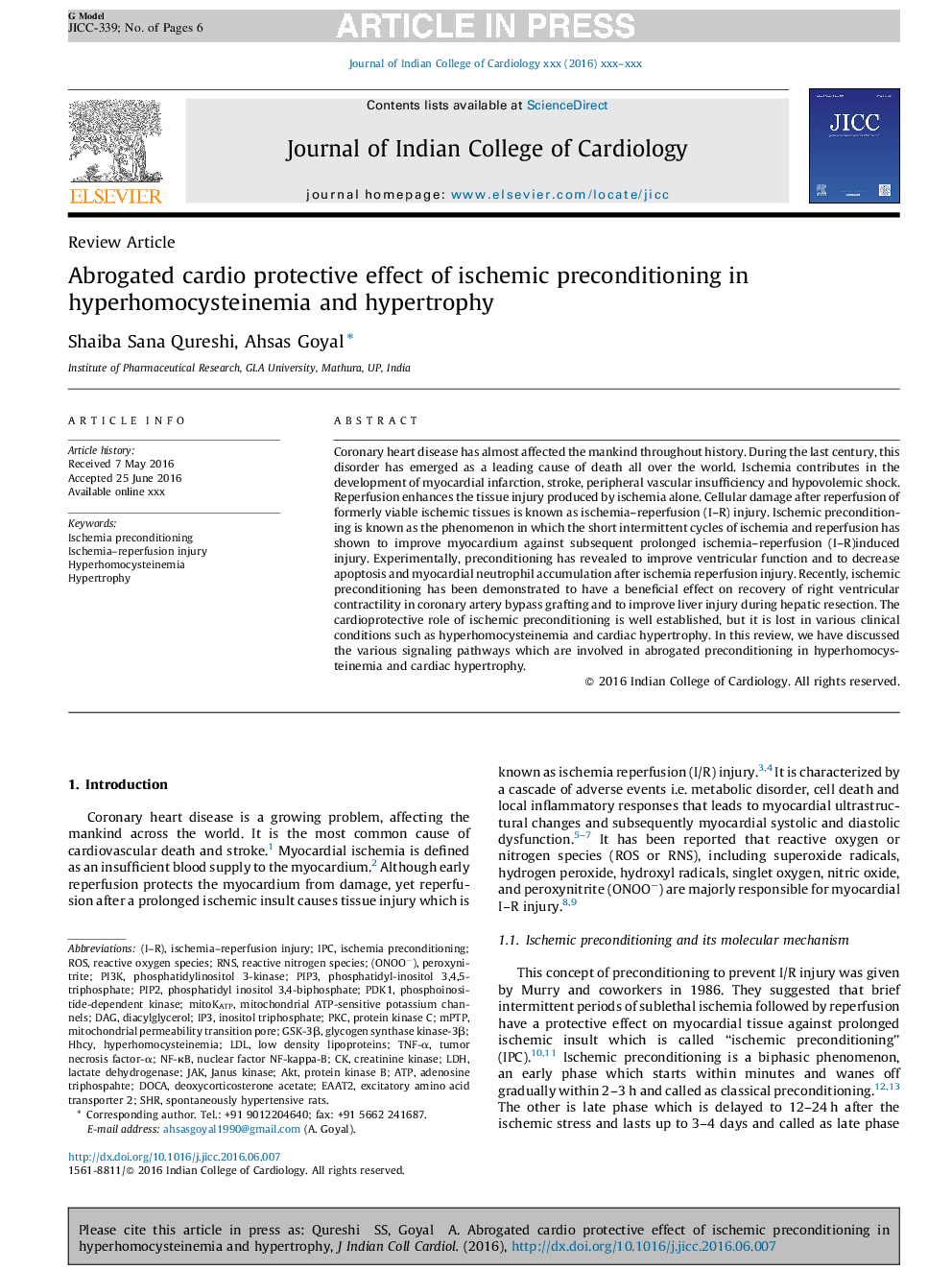| Article ID | Journal | Published Year | Pages | File Type |
|---|---|---|---|---|
| 5616178 | Journal of Indian College of Cardiology | 2016 | 6 Pages |
Abstract
Coronary heart disease has almost affected the mankind throughout history. During the last century, this disorder has emerged as a leading cause of death all over the world. Ischemia contributes in the development of myocardial infarction, stroke, peripheral vascular insufficiency and hypovolemic shock. Reperfusion enhances the tissue injury produced by ischemia alone. Cellular damage after reperfusion of formerly viable ischemic tissues is known as ischemia-reperfusion (I-R) injury. Ischemic preconditioning is known as the phenomenon in which the short intermittent cycles of ischemia and reperfusion has shown to improve myocardium against subsequent prolonged ischemia-reperfusion (I-R)induced injury. Experimentally, preconditioning has revealed to improve ventricular function and to decrease apoptosis and myocardial neutrophil accumulation after ischemia reperfusion injury. Recently, ischemic preconditioning has been demonstrated to have a beneficial effect on recovery of right ventricular contractility in coronary artery bypass grafting and to improve liver injury during hepatic resection. The cardioprotective role of ischemic preconditioning is well established, but it is lost in various clinical conditions such as hyperhomocysteinemia and cardiac hypertrophy. In this review, we have discussed the various signaling pathways which are involved in abrogated preconditioning in hyperhomocysteinemia and cardiac hypertrophy.
Keywords
inositol triphosphateGSK-3βIP3RNSMPTPDOCAEAAT2PKCIPCmitoKATPIschemia preconditioningPDK1PIP3HHcyPI3KNF-κBPIP2Mitochondrial ATP-sensitive potassium channelsJanus kinaseROSATPIschemia–reperfusion injuryAktmitochondrial permeability transition poretumor necrosis factor-αExcitatory amino acid transporter 2deoxycorticosterone acetatediacylglycerolDAGShrTNF-αPhosphatidylinositol 3-kinaselactate dehydrogenaseLDHlow density lipoproteinsLDLSpontaneously hypertensive ratsHyperhomocysteinemiaHypertrophyprotein kinase BProtein kinase CPeroxynitriteJAKCreatinine kinasephosphoinositide-dependent kinaseGlycogen synthase kinase-3βreactive nitrogen speciesReactive oxygen species
Related Topics
Health Sciences
Medicine and Dentistry
Cardiology and Cardiovascular Medicine
Authors
Shaiba Sana Qureshi, Ahsas Goyal,
